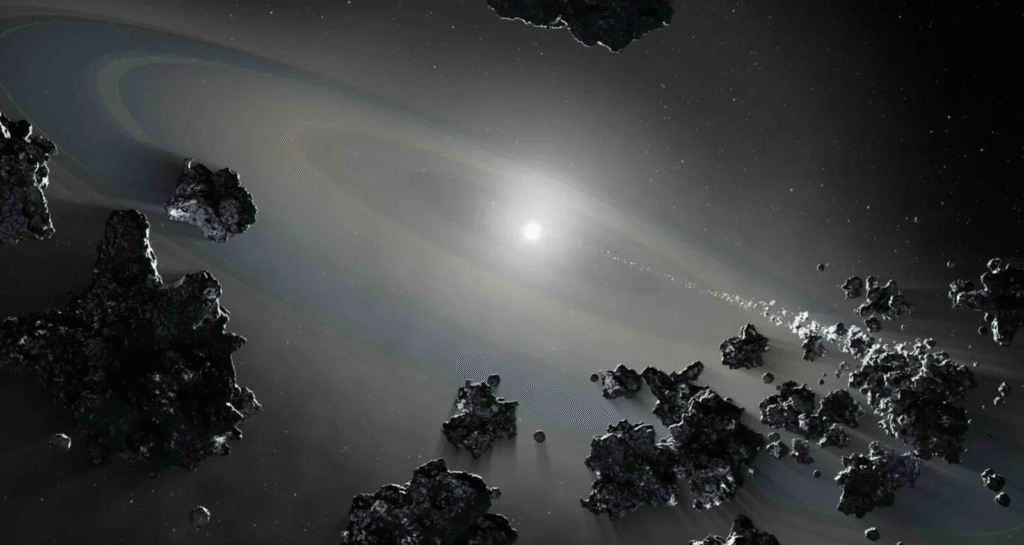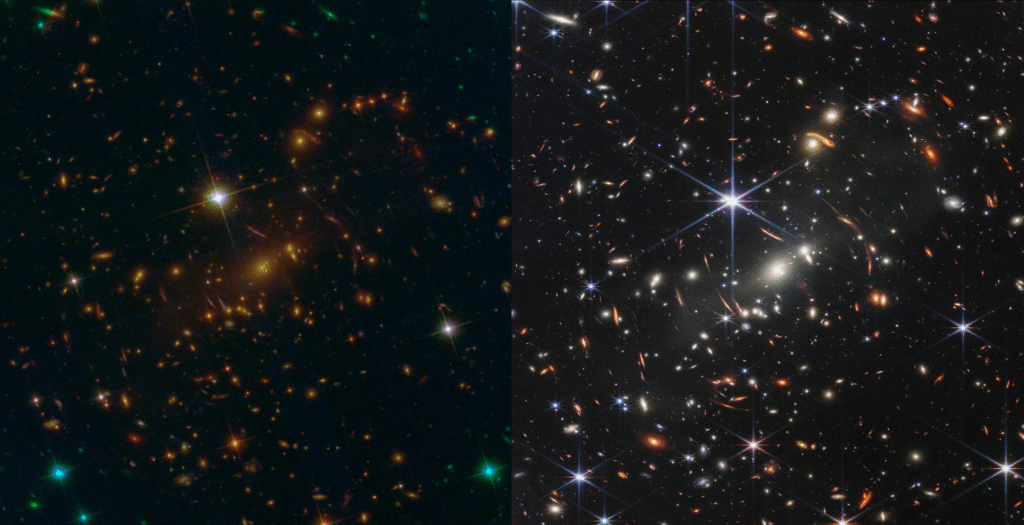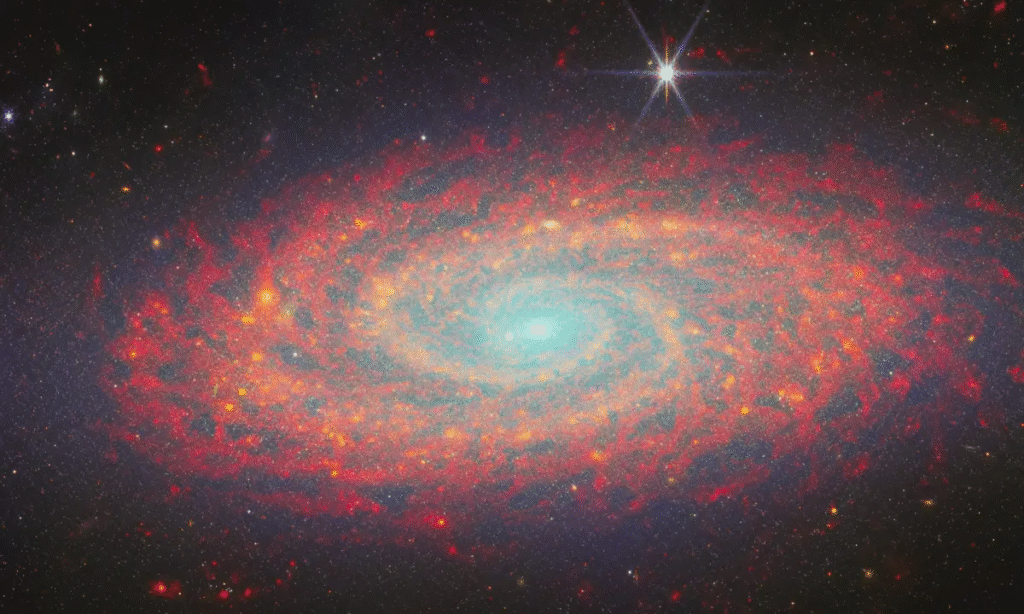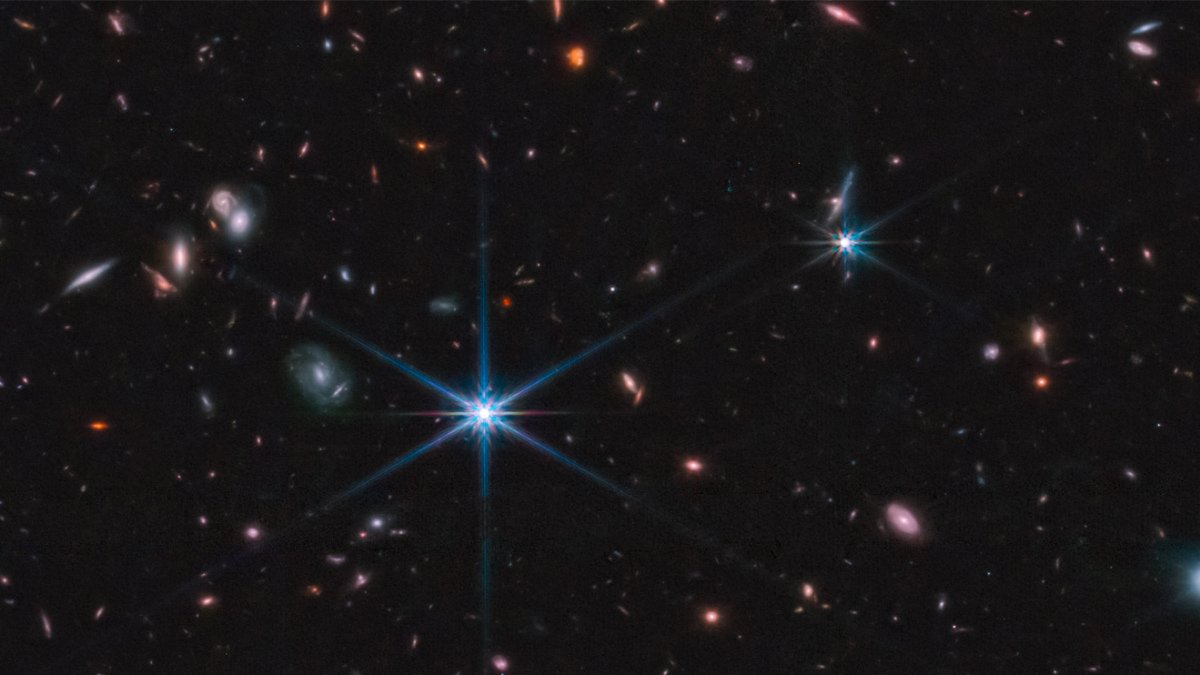The James Webb Space Telescope (JWST) is a flagship mission for NASA, the European Space Agency (ESA), and the Canadian Space Agency (CSA). As the most advanced and powerful space observatory ever created, it offers a wealth of groundbreaking capabilities that will revolutionize our understanding of the universe.
Detailed Mission and Research Goals

- Exploring the First Galaxies:
JWST will offer an unprecedented view of the universe’s early days by observing galaxies formed just a few hundred million years after the Big Bang. By analyzing their light, scientists aim to understand how galaxies began to form from the primordial gas that existed after the universe’s creation. These studies will provide crucial insight into the epoch of reionization, a period when the universe transitioned from an opaque state to a transparent one, allowing light to travel freely. - Investigating Stellar Birth and Death:
JWST will peer into the cosmic dust clouds where stars are born. By observing these regions in infrared, it will uncover processes that were previously hidden from optical telescopes. In addition to star formation, JWST will study the life cycles of stars, from their formation in molecular clouds to their death as white dwarfs, neutron stars, or black holes. - Understanding Black Holes and Their Role in Galaxy Evolution:
Supermassive black holes reside at the centers of most galaxies, including our own Milky Way. JWST will provide deeper insights into how these black holes influence the growth and evolution of galaxies. By studying the feedback mechanisms between black holes and their host galaxies, JWST will help scientists understand the interaction between the two. - Searching for Life Beyond Earth:
One of the most anticipated aspects of JWST’s mission is its ability to analyze the atmospheres of exoplanets—especially those in the habitable zone. The telescope will identify key gases, such as oxygen, carbon dioxide, methane, and water vapor, that could indicate the presence of life. It will focus on planets that are similar in size and temperature to Earth, especially those orbiting stars like the Sun. - Solar System Exploration:
While JWST will primarily focus on deep space, it will also make significant contributions to our understanding of our own solar system. The telescope will observe objects like asteroids, comets, moons, and planets, particularly those in the outer reaches of the solar system. It will study icy moons like Europa (Jupiter’s moon) and Titan (Saturn’s moon), both of which are considered potential habitats for microbial life due to their subsurface oceans.
Groundbreaking Technology Behind JWST

- Sunshield:
JWST’s sunshield, which consists of five layers of a special material called Kapton, acts as a barrier to protect its instruments from the Sun’s heat. This sunshield is about the size of a tennis court and works by keeping the telescope’s instruments cool, allowing them to detect the faint infrared signals that are crucial for its mission. The sunshield ensures that JWST can stay at an operational temperature of around -233°C (-387°F). - Deployable Mirror:
The primary mirror of JWST is made up of 18 hexagonal segments of beryllium coated in gold, designed to operate in the cold vacuum of space. This large mirror—nearly 6.5 meters (21 feet) in diameter—was designed to fold up for launch and unfold once JWST reaches its orbit at the second Lagrange point (L2). This mirror allows JWST to collect light from faint distant objects, improving its sensitivity and resolution. - Lagrange Point Orbit (L2):
JWST operates at the second Lagrange point (L2), which is located about 1.5 million kilometers (around 1 million miles) from Earth. L2 is a gravitationally stable point where the pull of the Sun and Earth balance out, providing a stable environment for the telescope. The location at L2 also allows JWST to have a clear, unobstructed view of the universe without interference from Earth’s atmosphere or temperature fluctuations. - Precision Pointing and Stability:
To capture detailed images and perform spectroscopic observations, JWST needs to maintain extremely precise pointing. It uses a Fine Guidance Sensor (FGS) to stabilize its position and ensure that the telescope remains accurately aimed at its target. This system allows JWST to focus on distant objects, enabling sharp, clear images even at extreme distances. - Cryogenic Cooling:
JWST’s instruments need to operate at cryogenic temperatures to reduce the noise from infrared radiation that could interfere with the faint cosmic signals it is designed to detect. The telescope’s MIRI (Mid-Infrared Instrument) is cooled using a cryocooler to maintain the ultra-low temperatures required for its observations.
Discoveries Expected from JWST

- Revealing the First Stars and Galaxies:
JWST’s ability to look back in time and observe the very first stars and galaxies is one of its most exciting features. By analyzing light that has been traveling for billions of years, it will help answer fundamental questions about how the universe transitioned from the cosmic dark ages to the era of galaxies, stars, and heavy elements. - Exoplanet Characterization:
JWST’s instruments will allow for a deeper investigation into exoplanet atmospheres. For instance, it will study the chemical composition of these atmospheres, looking for signatures of life or conditions conducive to life. Its ability to detect the light that passes through a planet’s atmosphere when it transits its host star will provide information on the planet’s weather, climate, and potential habitability. - Studying Distant Supernovae and Black Holes:
By observing exploding stars (supernovae) and active galactic nuclei (AGN), JWST will help unravel the complex processes that govern stellar death and black hole activity. In particular, it will observe Type Ia supernovae and gamma-ray bursts, which can provide critical insights into the expansion of the universe and the nature of dark energy. - Investigating Cosmic Dust and Star Formation:
JWST will be instrumental in studying regions where new stars are born. These areas are often shrouded in dust, which makes it difficult to observe them in visible light. However, JWST’s infrared capabilities will allow it to peer through these dust clouds and provide a clearer view of the star formation process. - Exploring the Solar System:
JWST will enhance our understanding of the solar system, particularly in its outer reaches. It will observe distant objects like comets in the Kuiper Belt and study the moons of gas giants like Jupiter and Saturn. These observations could yield insights into the origins of our solar system and the potential for life on these distant worlds.
Scientific Collaborations and Partnerships

The James Webb Space Telescope is a collaborative effort among three major space agencies:
- NASA (United States): JWST is primarily led by NASA, with much of the telescope’s development, construction, and operations managed by NASA’s Goddard Space Flight Center.
- ESA (European Space Agency): ESA has contributed significantly to JWST’s construction, particularly through its Near InfraRed Spectrograph (NIRSpec) and the provision of a launch vehicle.
- CSA (Canadian Space Agency): Canada has contributed the Fine Guidance Sensor and the Near InfraRed Imager and Slitless Spectrograph (NIRISS), which are essential for JWST’s precision pointing and imaging.
This international collaboration has allowed JWST to combine the expertise and resources of three leading space agencies, resulting in a truly global effort to explore the cosmos.
Long-Term Impact of JWST

The launch of JWST opens up new frontiers in astronomy, astrophysics, and astrobiology. Its discoveries are expected to provide answers to some of the most profound questions about the origins of the universe, the formation of stars and galaxies, the potential for life on other planets, and the role of dark matter and dark energy.
By providing such detailed, high-resolution images and data, JWST will likely be a cornerstone of scientific research for decades to come, influencing a broad range of fields, from astronomy to physics, chemistry, and biology. It’s a tool that will push the boundaries of human knowledge and unlock mysteries of the universe that have captivated humankind for centuries.
Disclaimer: The information provided regarding the James Webb Space Telescope (JWST) is based on current knowledge and available data. All content is intended for general informational purposes and may be subject to change as new discoveries are made and further research is conducted.
#JamesWebbSpaceTelescope #JWST #CosmicDiscovery #SpaceExploration #Astronomy #NASA #Astrophysics #Exoplanets #UniverseExploration #SpaceScience #AstronomicalResearch #Galaxies #StellarBirth #InfraredObservations #SpaceInnovation #FutureOfSpace #JamesWebb #SpaceTelescope #DiscoverTheUniverse #DeepSpaceExploration #AstronomyLovers#carrerbook#anslation


Leave a Reply